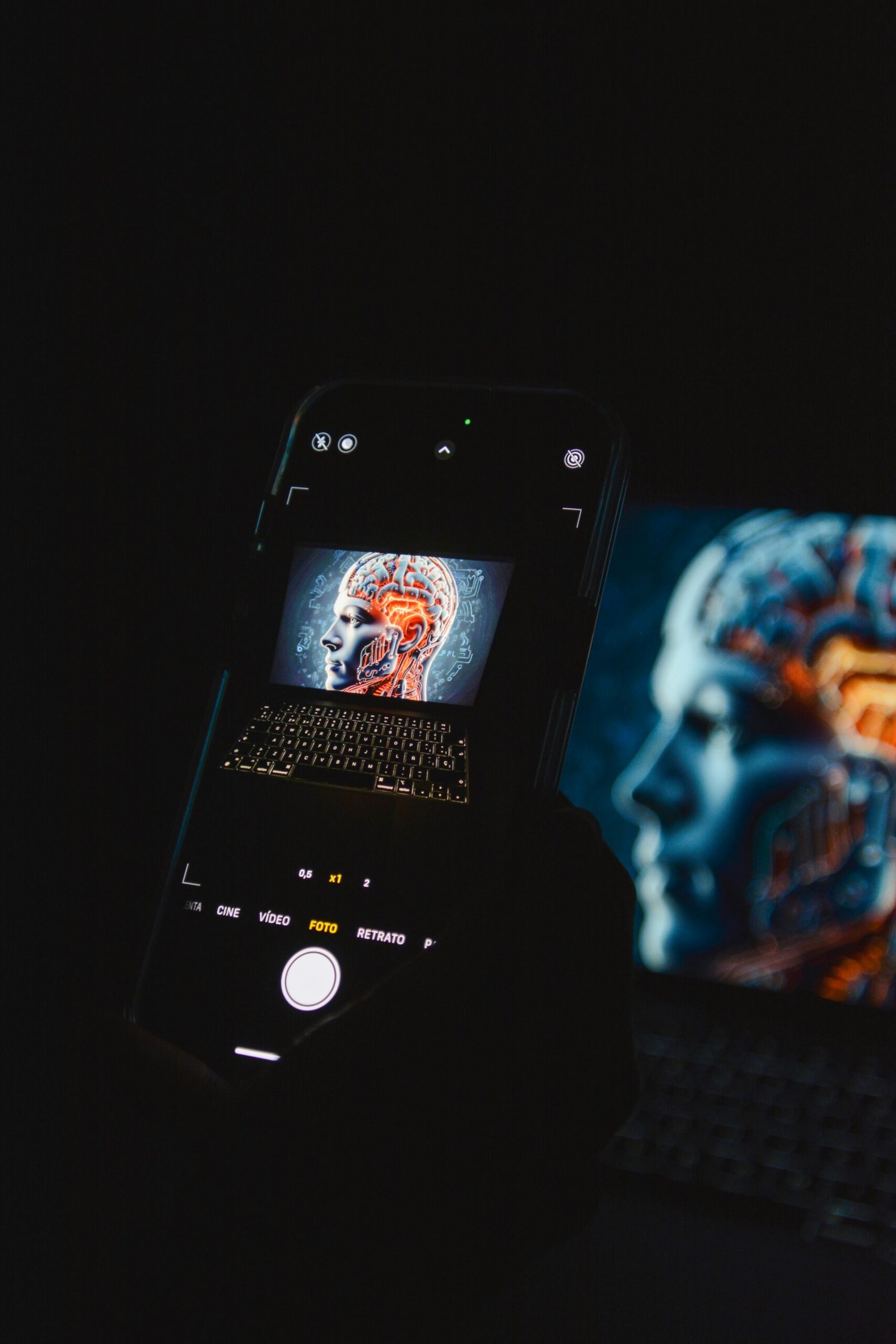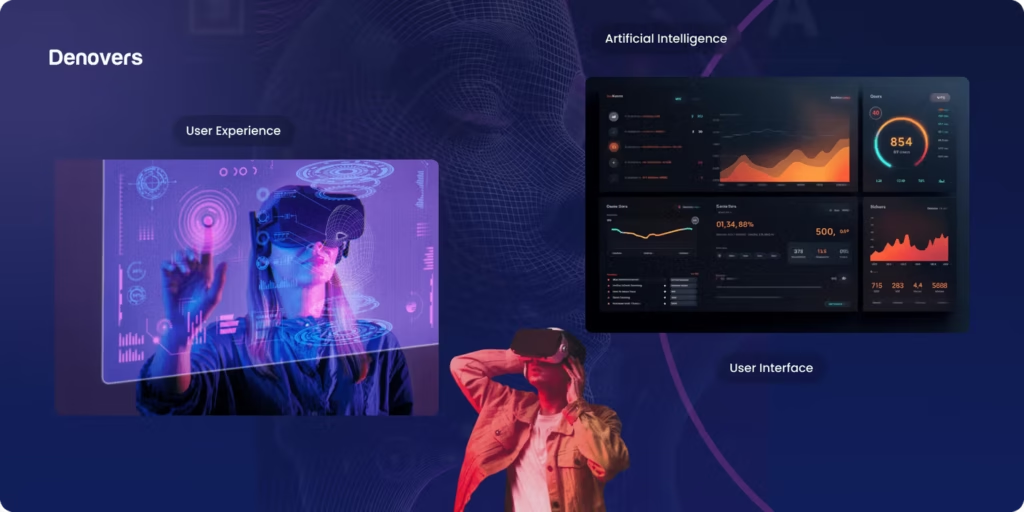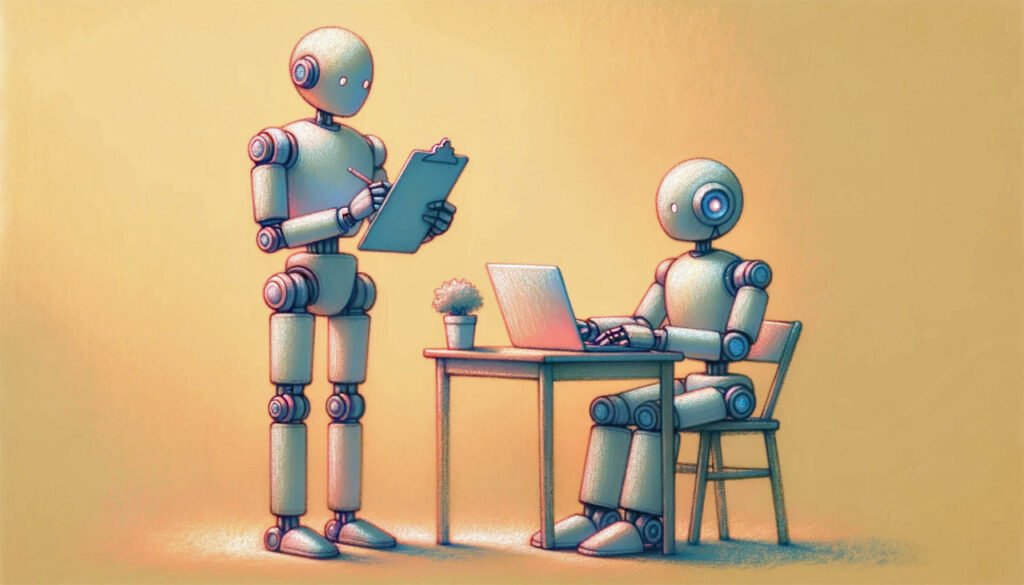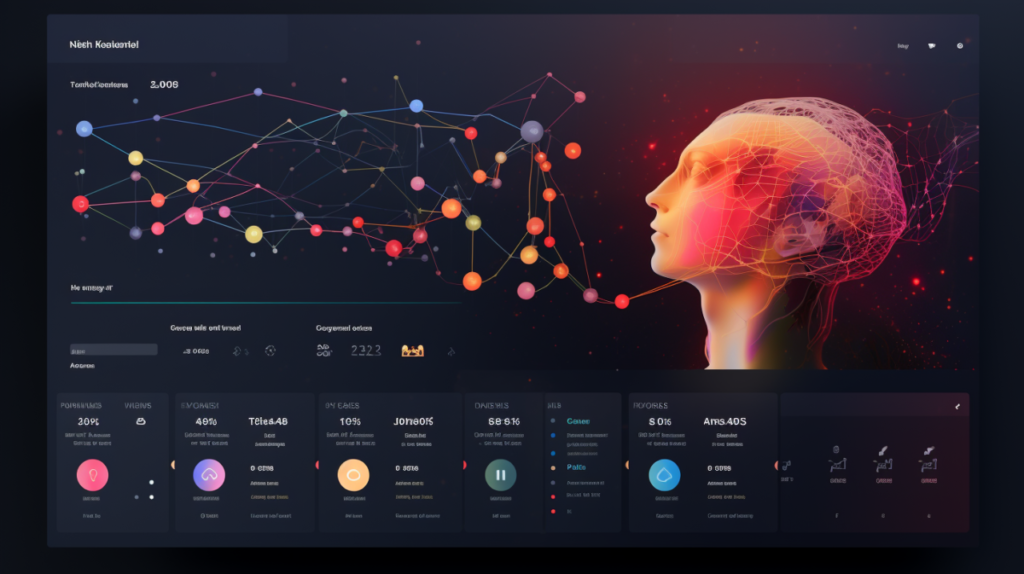Physical Address
304 North Cardinal St.
Dorchester Center, MA 02124
Physical Address
304 North Cardinal St.
Dorchester Center, MA 02124

UX AI is changing the way people enjoy digital platforms, but have you ever wondered how Netflix always knows what movie you want to watch next? Many users ask this question, and the answer is artificial intelligence. From films and music to shopping and photos, AI has become the hidden engine that makes user experience smooth and personal.
The mix of user experience design and artificial intelligence is called UX AI. It is not only about creating a nice design but about building smart systems that learn from users and respond to their needs. When you see a playlist on Spotify that feels like it was made just for you, or when YouTube recommends a video that matches your taste, that is UX AI in action.
The power of UX AI comes from its ability to enhance user experience. It studies behavior, predicts needs, and delivers the right content at the right time. For companies, this means more engagement and loyalty. For users, it means saving time, discovering new content, and enjoying a more personal journey.
In simple words, UX AI helps platforms to think like humans and serve users better. It works across many areas like enhancing video quality, improving photos, recommending music, and even supporting businesses with tools like experience with SAP. Each of these examples shows how AI turns everyday actions into smoother and smarter experiences.
In this blog, we will explore 7 powerful ways UX AI boosts positive user experience on content platforms. You will also see real examples from companies like Netflix, Spotify, and Adobe, along with future trends and challenges. By the end, you will understand why UX AI is becoming so important today and how it will shape the future of content platforms.

UX AI makes it possible for platforms to give every user a personal journey. Instead of showing the same content to everyone, AI studies what people like, what they search for, and what they skip. Based on this data, it recommends music, movies, articles, or even shopping items that match the taste of the user. This creates a more realistic and engaging experience reality for every individual.
For example, when Netflix suggests a new series or when Spotify makes a “Daily Mix” playlist, this is UX AI in action. The system learns from the user’s history and then designs new recommendations that feel special. This makes the experience reality more immersive because users see content that truly matches their interests.
Companies love this because it increases trust and loyalty. When a user feels understood, they return to the platform again and again. This is why personalization has become one of the most powerful ways UX AI improves the user experience and creates a more authentic experience reality for everyone.
UX AI is very useful for enhancing content like images, videos, and interactive elements on digital platforms. It can automatically improve the quality of pictures, fix lighting problems, remove unwanted objects, or suggest better layouts. This makes content easier to view and more enjoyable, creating a smoother experience for users.
For example, Adobe Photoshop and Premiere Pro use AI to enhance a picture or video. The “Content-Aware Fill” tool removes unwanted objects from images automatically, and color or brightness adjustments make visuals look professional. Video platforms like YouTube use AI to enhance video quality, improve resolution, and stabilize shaky clips.
UX AI also improves interactive elements, like menus, recommendation sections, or clickable buttons. These small changes help users navigate faster and feel more comfortable on the platform. Platforms that use AI for enhancing content can reduce frustration and increase engagement because users enjoy a visually appealing and easy-to-use interface.
For designers and creators who want to learn more about AI tools that improve content, Adobe Blog provides practical tutorials on using AI to enhance images, videos, and design workflows. Platforms that adopt these AI tools make digital experiences feel smarter, more responsive, and more professional.
By using AI to enhance visual content, platforms also create a more realistic experience reality, where users feel the content is tailored to their needs and tastes. This combination of personalization and enhancing technology is what makes UX AI so valuable in modern digital platforms.
UX AI is also improving the way people talk to machines. Voice assistants like Siri, Alexa, and Google Assistant are good examples. These systems understand natural language and respond in helpful ways. On content platforms, voice search makes it easier for users to find songs, shows, or books without typing.
For example, saying “Play relaxing music” to Spotify or “Show me cooking videos” to YouTube is much faster than typing long words. UX AI makes these conversations possible and natural.
This also helps people who may have difficulty typing or reading. With simple voice commands, they can enjoy content quickly and easily. In this way, UX AI builds inclusivity and makes platforms more open to everyone.
UX AI is also moving into an exciting area called Emotional AI. This means the system can study human emotions and respond in the right way. For example, AI can read text messages or voice tones to understand if the user is happy, sad, or frustrated.
On content platforms, this helps in designing better experiences. If a user is showing signs of boredom, the AI can suggest something more interesting. In customer support, Emotional AI can guide staff to answer with more care and empathy.
This creates a stronger bond between the platform and the user. When users feel that the system understands their emotions, they are more likely to enjoy the experience and remain loyal to the service.
UX AI is very powerful in predicting what users want before they even ask for it. This is called predictive analytics. The AI looks at past actions and then guesses the next step. For example, when YouTube starts playing the next video automatically, it is using predictive AI.
Spotify also does this with music. It can create playlists that match the time of day or mood. In business tools like experience with SAP, predictive UX AI helps workers by suggesting reports or insights before they search.
This not only saves time but also makes users feel that the platform is smart and easy to use. In technical fields, predictive analytics can even reduce mistakes, which builds more trust in the system.
Not everyone uses platforms in the same way. Some users may face challenges because of disability, language, or age. UX AI can solve this problem by making platforms more inclusive.
For example, YouTube offers auto captions for videos so people with hearing problems can still enjoy the content. AI translation tools allow global users to read articles or watch shows in their own language. Screen readers powered by AI can help blind users browse websites smoothly.
This is a very important role of UX AI because it ensures that all users have access to the same experience. Inclusion builds fairness and trust, which are key to creating a positive user experience.
The last way UX AI boosts user experience is by making platforms safer. AI can detect unusual activity, fake accounts, or harmful content. By blocking such risks, it protects the user and creates a secure space.
For example, social media platforms use AI to detect harmful posts or scams before they spread. E-commerce websites use AI to prevent fraud in payments. This builds confidence in the user because they know the platform is safe.
However, trust is not only about security. UX AI must also be ethical. If AI collects user data, the platform must be transparent about how that data is used. When users know their data is safe, they enjoy the service with peace of mind.
UX AI is already shaping real-world platforms, and many companies use it to improve user experience. Let’s look at three case studies: Netflix, Spotify, and Adobe. These examples show how UX AI enhances personalization, prediction, and content creation.

Netflix uses UX AI to provide personalized recommendations for millions of users worldwide. Every user has unique preferences, and Netflix studies what they watch, when they watch, and how long they watch. It also tracks which shows are skipped or stopped early. With this data, Netflix creates a homepage that is unique for each account.
For example, if a user enjoys action movies, Netflix suggests new action films before other genres. If another user prefers comedy, the homepage will show more comedy shows. Netflix also changes the artwork of movies depending on what the user likes. This makes the platform feel personal and smart.
Netflix tracks its experience modification rate to measure how changes in recommendations or interface design affect user engagement. Higher rates indicate that UX AI improvements are successfully increasing user satisfaction and time spent on the platform. This metric helps Netflix refine AI algorithms continuously.
To read more about Netflix’s AI-driven personalization, check Netflix Tech Blog for detailed insights.
Spotify uses UX AI to create playlists that match user moods and listening habits. One of its most popular features is “Discover Weekly,” updated every Monday. This playlist uses AI to analyze listening history, skipped songs, and liked tracks to recommend new songs tailored for the user.
Spotify also uses predictive UX AI to suggest songs for workouts, study sessions, or relaxing evenings. This predictive design saves time and creates a positive experience for users. Artists also benefit because AI connects the right music to the right audience.
Spotify monitors its experience modification rate to understand how changes in playlists, recommendations, or interface affect user satisfaction. By tracking this rate, Spotify can adjust UX AI strategies to improve engagement and retention.
For more details on Spotify’s AI and music recommendation systems, visit Spotify Engineering which explains their machine learning and AI methods.
Adobe uses UX AI to help designers and content creators improve photos, videos, and graphics. Tools like Photoshop and Premiere Pro include AI features to enhance a picture, fix lighting, remove objects, or adjust video quality with one click.
For example, “Content-Aware Fill” in Photoshop allows users to remove unwanted objects, and AI fills the empty space naturally. Video editors can use AI to clean audio, stabilize footage, and suggest edits automatically. UX AI also helps beginners create professional designs quickly. Adobe tracks experience modification rate to measure how AI features improve workflow and satisfaction for both beginners and advanced users.
These case studies show how UX AI works in entertainment, music, and professional design. Netflix uses it for personalization, Spotify uses it for predictive experiences, and Adobe uses it for content enhancement. By monitoring experience modification rate, these companies ensure that AI changes genuinely improve engagement and satisfaction.
Together, they prove that UX AI is essential for modern content platforms. Companies that adopt AI thoughtfully can increase user engagement, loyalty, and satisfaction. For more advanced AI tools and tutorials for content platforms, users and creators can also explore Iceberg AI Content.
UX AI has many benefits, but it also comes with challenges and limits. Companies must understand these problems to use AI in a safe and fair way. If these issues are ignored, user experience may turn negative instead of positive.

The first challenge of UX AI is data privacy. To create personal experiences, AI systems must collect a lot of data about users. This includes what they watch, listen to, search for, and even where they are located. While this helps AI give better suggestions, it can also create risks. If the data is not protected, it can be stolen or misused.
For example, if a platform shares user information without permission, people may lose trust in the service. Once trust is lost, it is very hard to rebuild. Users want personalization, but they also want safety. This means companies must use strong security systems and be clear about how data is used. A positive user experience is only possible when privacy is respected.
Another limitation of UX AI is over-automation. AI is smart, but it cannot replace human creativity completely. If everything is controlled by AI, platforms may feel too mechanical. For example, if a music app always suggests songs only based on past choices, users may never discover something new outside their taste.
This can create boredom or limit the growth of user interests. Sometimes people want surprises, not just predictions. A balance is needed between AI-driven suggestions and human choice. Over-automation can reduce the joy of discovery, which is an important part of user experience.
UX AI also faces ethical challenges. AI systems learn from data, but data can be biased. If the data has mistakes or unfair patterns, AI will repeat them. For example, if a job platform uses AI to recommend resumes, it may unfairly favor one group over another based on old data.
Bias in AI can make users feel excluded or treated unfairly. This is very harmful for both users and companies. It can create negative headlines and reduce trust in the platform. To solve this, companies must check their AI systems regularly and make sure they treat all users equally.
Another challenge is cost. Building and running UX AI systems is expensive. Small companies may not have the money to use advanced AI. Even for large companies, training AI models requires time and skilled workers. If not done well, the system may fail to improve user experience and instead create frustration.
In short, UX AI has great power but also serious limits. Data privacy, over-automation, ethical issues, and high costs are all challenges that must be managed carefully. When companies solve these problems, UX AI can deliver its full promise of creating positive and trusted user experiences.
UX AI is shaping the future of content platforms in exciting ways. The use of artificial intelligence is no longer just about simple recommendations. It is now growing into smarter systems that understand human emotions, behaviors, and needs in more advanced ways. As technology improves, the future of UX AI will bring new changes that make digital experiences more personal, faster, and easier for users.
One big future trend in UX AI is emotional intelligence. Emotional AI can read human feelings through voice, text, or even facial expressions. For example, a video platform may notice if a user looks bored and then quickly suggest more exciting content. This can create a closer connection between users and platforms.
In the future, AI systems will not only provide information but also react to human emotions. This will make user experience more human-centered. People will feel that technology understands them on a deeper level, which can increase trust and satisfaction.
Another strong trend in UX AI is the growth of voice and chat-based systems. Voice assistants like Alexa, Siri, and Google Assistant are already popular, but they will become smarter in the future. Instead of only answering simple questions, they will be able to hold longer and more natural conversations.
For content platforms, this means users may no longer need to type or click. They can simply ask for what they want in natural speech. For example, instead of searching for “romantic comedies from the 1990s,” a user can just say, “I want to watch a funny love movie from the old days.” AI will understand the request and deliver the right result.
UX AI will also grow into hyper-personalization. This means AI will not just suggest what users might like now but also predict what they will want in the future. For example, a learning platform could suggest courses before a student even thinks of enrolling.
Predictive UX will save time and effort for users. They will not need to search deeply for what they need. Instead, AI will deliver it directly. However, this must be done carefully so users do not feel controlled or limited by the system. Balance between personalization and freedom will be very important.
Another exciting trend in UX AI is the use of augmented reality (AR) and virtual reality (VR). With AI, these technologies can become more interactive and realistic. For example, a shopping platform may allow users to “try on” clothes in a virtual mirror before buying. In the future, such experiences will be smoother and more lifelike with the help of AI. This will change how people interact with digital platforms. Instead of being passive users, they will become active participants in virtual environments.
Finally, the future of UX AI will also focus on ethics and responsibility. As people become more aware of data privacy and fairness, platforms will need to design AI that is transparent and ethical. Companies will have to explain clearly how AI works and give users control over their own data. Responsible AI will become a strong demand from users. Platforms that ignore this may face backlash, while those that respect ethics will build stronger long-term trust.
UX AI is changing quickly, and the future will make content platforms even smarter. Artificial intelligence is no longer just for simple recommendations. In the future, UX AI will understand human emotions, predict needs more accurately, and create smoother experiences for users. These trends will make digital platforms more personal, faster, and easier to use.

One major trend in UX AI is emotional intelligence. Emotional AI can read human feelings through voice, text, or facial expressions. For example, a video platform may notice if a user seems bored and suggest more interesting content immediately. This creates a closer connection between users and platforms.
In the future, AI will not just provide content but also react to how people feel. This makes the experience human-centered. Users will feel understood, which increases trust and satisfaction. Platforms that adopt emotional AI will stand out because people enjoy technology that feels personal.
Voice and chat-based systems are also growing. Assistants like Alexa, Siri, and Google Assistant are already popular, but they will become smarter. Users will be able to ask complex questions or hold longer, natural conversations with AI.
For content platforms, this means users can find what they want without typing. For example, instead of searching for “romantic comedies from the 1990s,” a user can say, “Show me a funny love movie from the old days,” and AI will understand. Voice and conversational AI make platforms more user-friendly and accessible for everyone.
UX AI will become better at hyper-personalization. This means AI will not only suggest what users might like now but also predict what they may want in the future. For example, a learning platform could suggest courses before a student even thinks of enrolling.
Predictive UX saves time and effort for users because they get content that fits their needs immediately. However, companies must balance personalization and freedom. Users should feel guided, not controlled. For those who want to learn more about AI tools for prediction and personalization, icebergaicontent.com provides practical guides and examples for digital platforms.
AR and VR are also growing with UX AI. AI can make virtual experiences more realistic and interactive. For example, online shopping platforms may let users “try on” clothes virtually. UX AI will help make these experiences smooth and lifelike.
Users will no longer just watch or read content; they will actively participate in virtual environments. This trend will transform how people interact with digital content.
Finally, UX AI will focus more on ethics. Users are concerned about data privacy and fairness. Platforms must design AI systems that are transparent and give users control over their data. Responsible AI design will become a key factor for trust. Platforms that ignore ethical concerns may lose users, while those that respect privacy and fairness will build strong loyalty.
For more resources and tutorials about advanced AI tools for content platforms, you can visit Iceberg AI Content.
UX AI has become one of the most important tools for improving user experience on content platforms. From personalization to predictive analytics, emotional AI, and content enhancement, UX AI changes the way people interact with digital platforms every day. It makes browsing, watching, listening, and learning easier, faster, and more enjoyable, creating a more realistic experience reality for users.
Looking to the future, UX AI will continue to evolve. Emotional intelligence, hyper-personalization, smarter voice interfaces, AR and VR experiences, and responsible AI design are trends that will make platforms even more engaging. Companies that follow these trends thoughtfully will not only attract more users but also increase loyalty and long-term satisfaction.